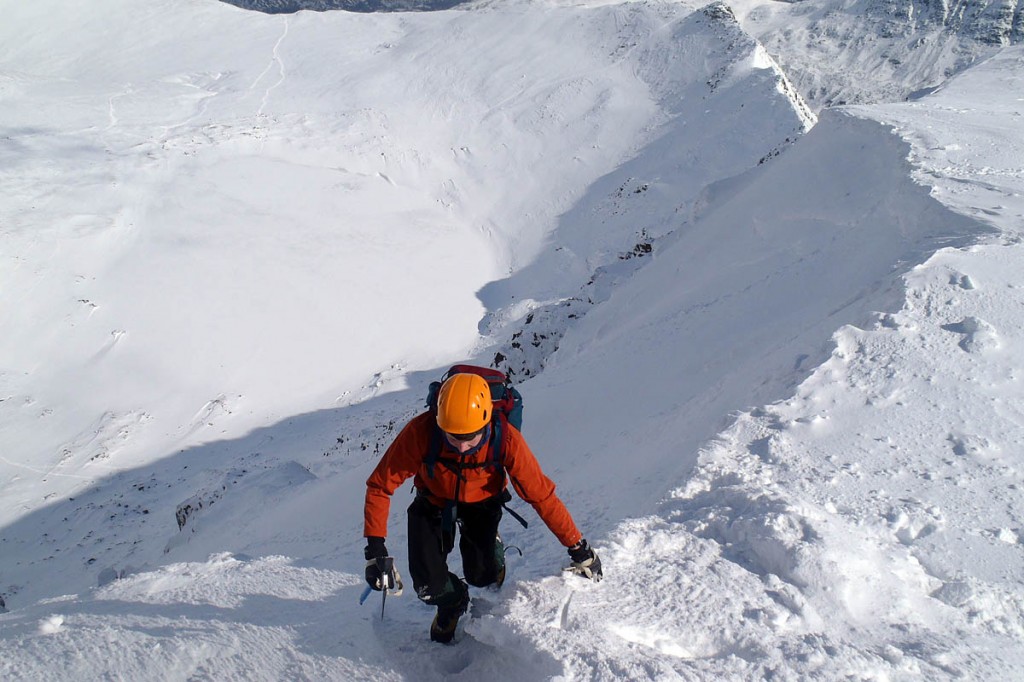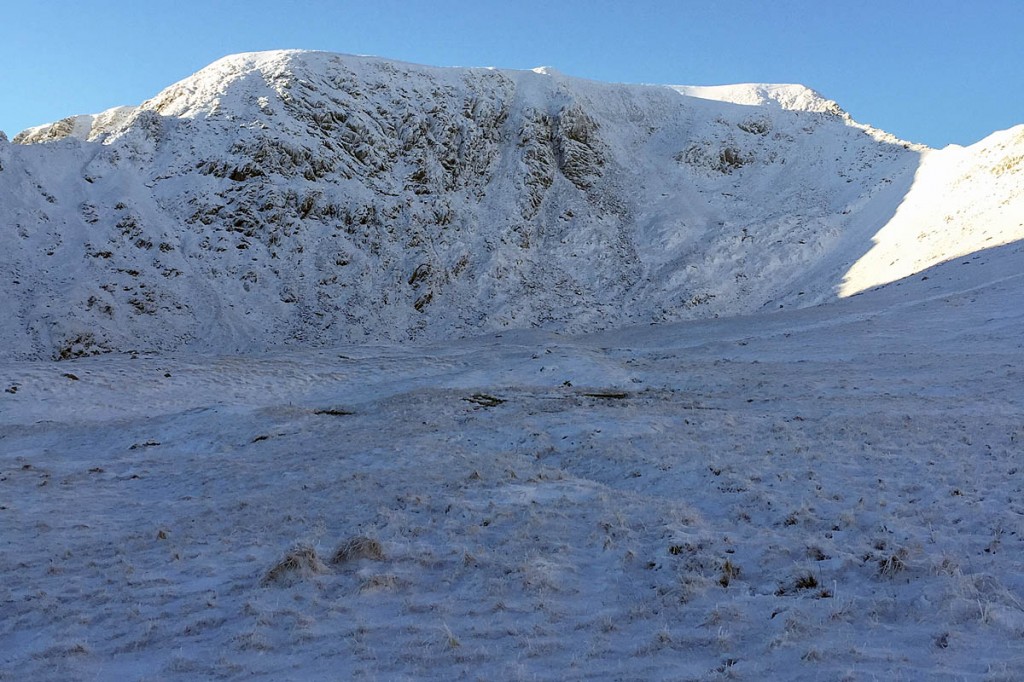A temperature monitoring system has been set up on England’s third highest mountain to help protect rare plant life on winter climbing routes.
The project on the headwall of Helvellyn above Red Tarn has been set up by the British Mountaineering Council with the John Muir Trust, which manages the mountain.
The crags on the 950m (3,117ft) mountain are home to rare Alpine flora, including two plants unique in England.
The new system will provide hourly temperature data to enable winter climbers to assess conditions before tackling routes on the crags.
A John Muir Trust spokesperson said: “The Helvellyn massif, because of its height and north-facing aspect, often bears the brunt of severe weather conditions ahead of other parts of the Lake District.
“That makes it a popular location for winter climbing.
“The climactic conditions and the craggy terrain provides a niche habitat for unusual plants, including three extremely rare Alpine species. These are vulnerable to damage by crampons and ice-axes when the ground is not frozen solid.
“The new facility will provide conditions-specific information to help winter climbers plan ahead and make sure they are suitably equipped to keep safe and protect plant life.”
Rare and precious plant life on the Helvellyn massif includes: Alpine saxifrage, which in England is unique to Helvellyn; downy willow, a low branching dwarf tree, again found only on Helvellyn, and Alpine meadow grass, which grows in only four locations in England.
The spokesperson said: “The good news is that on solidly frozen turf, axes and crampons can be used without fear of damage.
“The bad news is that using this equipment in marginal conditions can tear unfrozen turf from the crag and remove the habitat needed for these plants to take root and survive. It takes many years for soil to develop depth on ledges and in cracks, so removing it can be ecologically disastrous.”
The temperature data can be seen on the BMC’s website, which also includes similar information for Great End on the Scafell range.
Full advice for winter climbers in the Lake District is included on the BMC’s White Guide, which can also be accessed via the data page.

